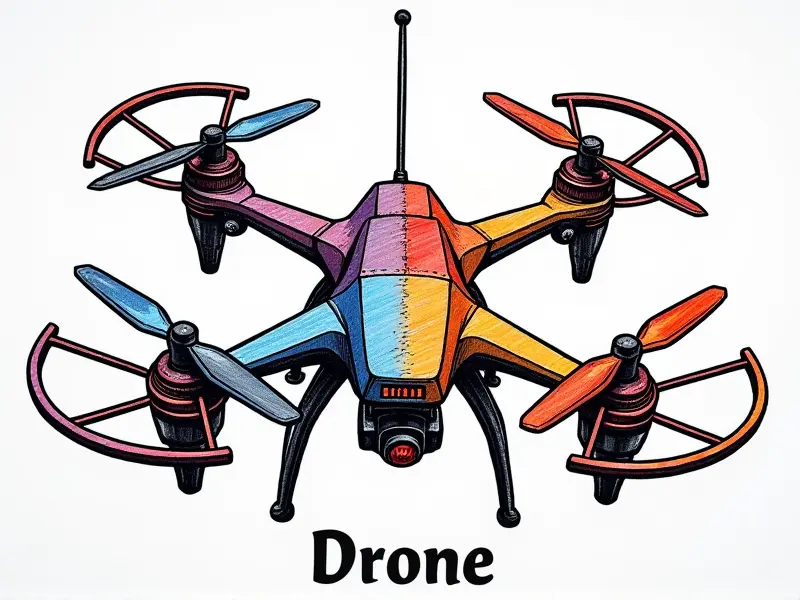How to film with an FPV drone

Mastering FPV Drone Cinematography Basics
Filming with an FPV (First Person View) drone is an exhilarating way to capture stunning aerial footage. To get started, it's essential to understand the basics of FPV drone cinematography. This involves setting up your drone for optimal performance and ensuring that you have all necessary equipment.
Understanding Your Drone
Your FPV drone should be equipped with high-quality cameras and video transmission systems. Familiarize yourself with your drone's camera settings, such as resolution, frame rate, and bitrates. Adjust these settings based on the type of footage you want to capture.
Top Tips for Stunning FPV Drone Footage
To achieve professional-quality aerial shots, follow these top tips:
- Plan Your Flight Path: Before taking off, plan your flight path and identify key shooting points. This will help you capture the best angles and avoid obstacles.
- Practice Flying: Spend time practicing flying in a safe environment to improve your skills and reaction times.
- Use High-Quality Gear: Invest in high-quality cameras, transmitters, and receivers for crystal-clear footage. Quality gear is crucial for professional-grade videos.
Beginner's Guide to FPV Drone Filming
For beginners looking to start filming with an FPV drone, here are some essential steps:
- Choose the Right Equipment: Select a drone that suits your needs and budget. Consider factors like camera quality, flight time, and range.
- Learn Basic Flight Controls: Mastering basic controls such as yaw, pitch, roll, and throttle is crucial for smooth flying.
- Practice in Different Conditions: Experiment with filming under various lighting conditions to understand how your drone performs.
Optimize Your FPV Camera Settings
Adjusting camera settings can significantly impact the quality of your footage. Here are some tips:
- Resolution and Frame Rate: Higher resolutions provide better detail, but may reduce frame rate. Choose a balance that suits your needs.
- Bitrate Settings: A higher bitrate ensures smoother video quality, especially when recording fast-moving scenes or complex environments.
- Battery Management: Ensure your drone's battery is fully charged before each flight. Low battery can affect camera performance and stability.
Essential Gear for FPV Drone Videography
The right gear is crucial for achieving top-notch results. Here are some must-have items:
- FPV Goggles: High-quality goggles provide a clear, immersive view of your drone's live feed.
- Transmitter and Receiver: Reliable communication between the controller and drone is essential for smooth operation.
- Batteries: Carry extra batteries to extend flight time and avoid downtime during shoots.
Capture Smooth Aerial Shots with FPV Drones
To capture smooth aerial shots, follow these techniques:
- Stabilize Your Drone: Use a gimbal or stabilization system to keep your camera steady during flight.
- Avoid Windy Conditions: Strong winds can make flying and filming challenging. Opt for calm weather conditions when possible.
- Practice Slow Movements: Smooth, slow movements create a cinematic feel in your footage.
Enhance Your FPV Drone Video Quality
To enhance the quality of your videos, consider these tips:
- Edit with Professional Software: Use software like Adobe Premiere Pro or Final Cut Pro to edit and refine your footage.
- Add Visual Effects: Enhance your videos by adding visual effects such as color grading, filters, and transitions.
- Optimize for Different Formats: Tailor your video quality settings based on the platform you intend to publish (e.g., YouTube, Vimeo).
Creative Ways to Use FPV Drones in Film
FPV drones offer endless creative possibilities. Here are some innovative ideas:
- Action Sports Footage: Capture thrilling action sports like skateboarding or snowboarding from a unique aerial perspective.
- Nature and Wildlife Documentaries: Use FPV drones to film breathtaking landscapes, wildlife, and natural phenomena.
- Hypothetical Scenes: Create hypothetical scenes for films or commercials by flying your drone through various locations.
FPV Drone Filming Techniques Explained
Understanding the techniques involved in FPV drone filming can elevate your skills. Here are some key techniques:
- Pan and Tilt: Smoothly pan left or right, and tilt up or down to capture dynamic shots.
- Dolly Zoom Effect: Simulate a dolly zoom effect by moving the drone closer while simultaneously tilting upward.
- Circular Flight Path: Fly your drone in circular patterns around an object for dramatic aerial footage.
Achieving Smooth Shaky-Free Footage
To achieve smooth, shaky-free footage:
- Use a Gimbal: A gimbal helps stabilize the camera and reduces vibrations caused by wind or sudden movements.
- Maintain Steady Flying: Practice flying smoothly without sharp turns or rapid ascents/descents.
- Edit Out Jittery Parts: During post-production, use editing software to remove any jittery sections of your footage.
Maximizing Battery Life During Filming
To maximize battery life during filming sessions:
- Select Efficient Settings: Adjust camera and drone settings to conserve power without compromising quality.
- Clean Batteries Regularly: Keep your batteries clean and free from dust, as this can affect performance.
- Charge Fully Before Use: Ensure all batteries are fully charged before each flight session.
Conclusion
Filming with an FPV drone opens up a world of creative possibilities. By mastering the basics, optimizing your camera settings, and using essential gear, you can capture stunning aerial footage that stands out. Whether you're filming action sports, nature documentaries, or hypothetical scenes, the right techniques and equipment will help you achieve professional-quality results.

